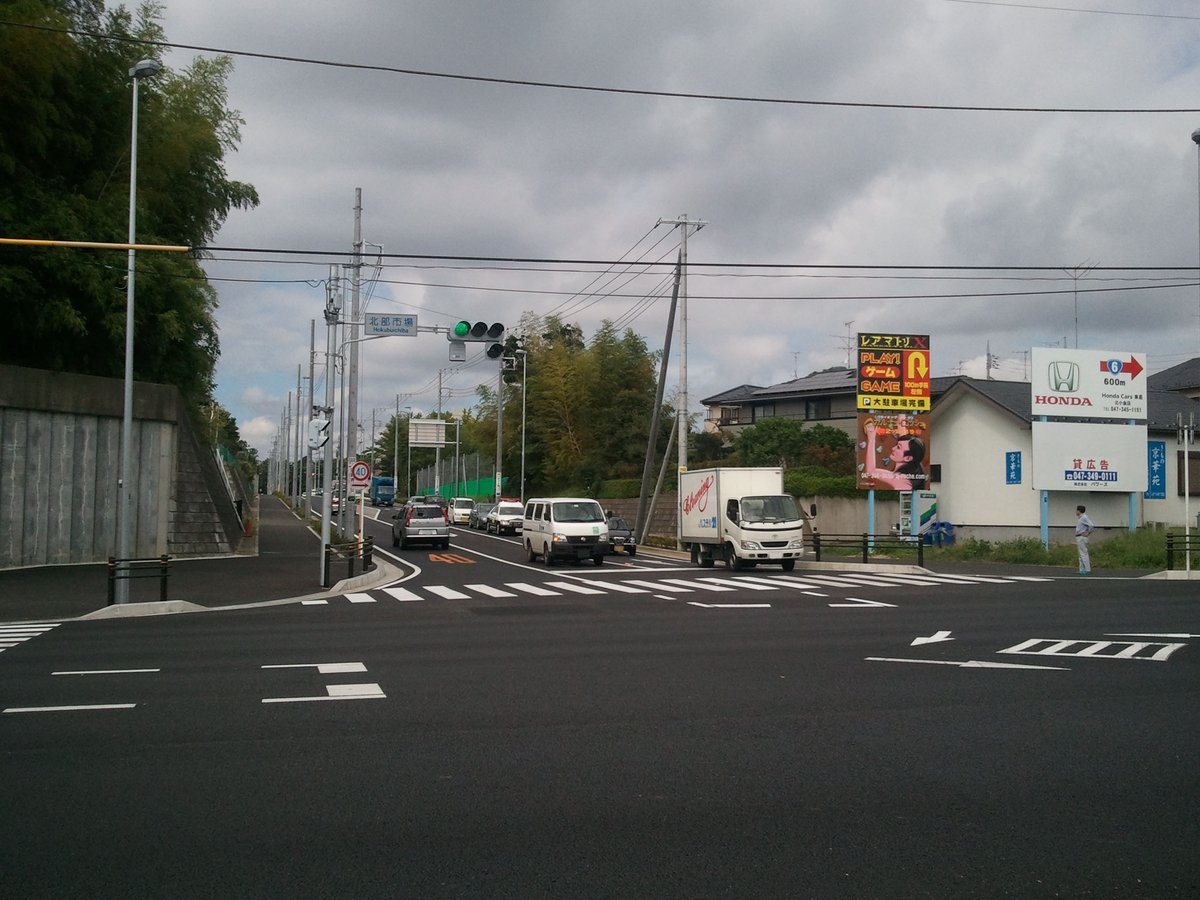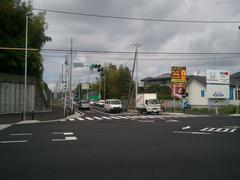
Japan National Route 6 Visiting Hours, Tickets, and Travel Guide
Date: 14/06/2025
Introduction to Japan National Route 6 and Its Significance
Japan National Route 6 is a historic and scenic corridor that traverses approximately 354 kilometers (220 miles), connecting the heart of Tokyo to Sendai in Miyagi Prefecture. Originating at the iconic Nihonbashi Bridge in Tokyo—long regarded as Japan’s zero milestone for highways—Route 6 follows the path of the Mito Kaidō, a major Edo-period road that facilitated commerce, pilgrimage, and the sankin-kōtai system of feudal lord attendance. Officially designated as National Route 6 in 1952, this highway now parallels the Tōhoku Main Line railway and serves as a vital conduit for both commuters and travelers.
Along Route 6, visitors encounter a blend of historic districts, cultural sites, and natural landscapes. From Tokyo’s Nihonbashi and Asakusa’s Senso-ji Temple to Hitachi Seaside Park’s seasonal blooms and the revered Kashima Shrine, the route showcases Japan’s history, culture, and resilience—particularly in areas rebuilt after the 2011 Great East Japan Earthquake and Fukushima nuclear disaster. This guide provides a comprehensive overview of Route 6’s history, key attractions, visitor advice, and practical travel information, with a special focus on its Tokyo segment.
For more official details, see the MLIT Road History PDF and Wikipedia: National Route 6.
Contents
- Introduction
- Historical Background
- Key Attractions and Historical Sites
- Travel Tips
- Practical Information
- Impact of Natural Disasters and Reconstruction
- Cultural and Social Legacy
- Route 6 in Tokyo: Overview and Visitor Information
- Visiting Hours, Attractions, and Travel Tips Along Route 6 in Tokyo
- Visiting Senso-ji Temple in Tokyo: Hours, Tickets, and Essential Travel Tips
- FAQs
- Conclusion
- Sources
Historical Background of Japan National Route 6
Route 6 traces its origins to the Edo period, when the Mito Kaidō was one of five major highways radiating from Edo (now Tokyo). Commissioned by the Tokugawa shogunate, the route connected Edo to Mito in Ibaraki Prefecture, supporting commerce and administrative travel. After the Meiji Restoration, the road was modernized, becoming part of Japan’s growing national infrastructure. In 1952, it was designated as National Route 6, running north from Tokyo to Sendai and paralleling the Pacific coast and Tōhoku Main Line.
Key Attractions and Historical Sites Along Route 6
- Nihonbashi Bridge (Tokyo): The symbolic starting point of Japan’s highway system.
- Historic Post Towns: Remnants of Edo-period inns and post stations in Matsudo, Kashiwa, and Mito.
- Kashima Shrine (Ibaraki): An ancient Shinto shrine renowned for its architecture and festivals.
- Hitachi Seaside Park: Famous for its seasonal flower displays, especially nemophila and kochia.
- Jōban Coalfield Heritage Sites: Markers of Japan’s postwar industrial development in Ibaraki and Fukushima.
- Disaster Memorials: Museums and markers dedicated to the 2011 Great East Japan Earthquake and tsunami.
Travel Tips for Visiting Japan National Route 6
- Access & Transportation: Route 6 starts at Nihonbashi in Tokyo. Easily accessible by public transport or car. Renting a car is ideal for exploring the full route.
- Best Times to Visit: Spring (April–May) and autumn (October–November) for pleasant weather and natural beauty.
- Safety: Some areas near Fukushima may have restricted access due to radiation advisories—check current conditions before travel.
- Photography: Highlights include Nihonbashi Bridge, coastal areas near Hitachi, and floral displays at Hitachi Seaside Park.
- Local Events: Plan visits during festivals such as the Mito Plum Blossom Festival or Kashima Shrine’s annual celebrations.
Practical Information
- Route 6 Access: Open 24/7 as a public highway, but city traffic peaks during rush hours.
- Accommodations: A range of ryokan and hotels are available in towns and cities along the route.
- Nearby Destinations: Consider side trips to Tsukuba Science City, Tōhoku natural parks, and Sendai’s historic sites.
Impact of Natural Disasters and Reconstruction
The 2011 Great East Japan Earthquake and tsunami caused severe damage to parts of Route 6, particularly in Fukushima Prefecture, where sections were closed due to both infrastructure damage and the Fukushima Daiichi nuclear accident. Most of the route reopened by 2014, symbolizing resilience and recovery.
Cultural and Social Legacy
Route 6 encapsulates a blend of Japan’s historical milestones and modern progress. Landmarks, traditional inns, and philosophical ties to the Mito School of Confucian thought are preserved along the route, offering travelers a window into Japan’s evolution from feudal times to the present.
Exploring Japan National Route 6 in Tokyo: Travel Tips, Historical Sites, and Visitor Information
Geographic Scope and Starting Point
Route 6 begins at Nihonbashi, Tokyo’s historic zero milestone (Japan Guide). The route threads northeast through Chuo, Taito, Sumida, and Katsushika wards, passing iconic attractions such as Senso-ji Temple in Asakusa (Japan Wonder Travel), Tokyo Skytree, and the nostalgic Shibamata district.
Route Overview
- Key Intersections: Connects with other highways and the Shuto Expressway, facilitating citywide access (Go Tokyo).
- Rail Parallels: The JR Joban Line and other railways provide alternate travel options.
Historical and Cultural Context
- Edo Period Roots: Follows the Mito Kaido, established during the Edo period (Introducing Tokyo).
- Modern Era: Upgraded in the Meiji period and designated as a national highway in 1952 (Japan City Tour), Route 6 integrates historic and contemporary Tokyo.
Urban Landmarks and Economic Role
- Nihonbashi: Historic bridge and commercial hub.
- Asakusa: Home to Senso-ji Temple and bustling Nakamise Street.
- Sumida: Features Tokyo Skytree and Sumida Hokusai Museum.
- Katsushika: Shibamata’s Taishakuten Temple and nostalgic streetscape.
Route 6 supports logistics, retail, and tourism, making it vital for Tokyo’s economy and daily life (Japan City Tour). It is also key to Tokyo’s disaster response infrastructure (Go Tokyo).
Practical Visitor Information
Transportation
- Public Transit: Accessible via JR Joban Line and Tokyo Metro Hibiya Line (Japan Guide).
- Cycling and Walking: Pedestrian-friendly zones near Asakusa and Sumida. Cycling is popular along the Sumida River.
- Driving: Expect traffic congestion during rush hours; parking is more available in suburban areas.
Visiting Hours & Ticket Prices for Major Landmarks
| Landmark | Visiting Hours | Ticket Price |
|---|---|---|
| Senso-ji Temple | 6:00 AM – 5:00 PM | Free |
| Tokyo Skytree | 8:00 AM – 10:00 PM | ¥2,100–¥3,100 |
| Sumida Hokusai Museum | 9:30 AM – 5:30 PM | ¥400 |
| Taishakuten Temple | 8:00 AM – 5:00 PM | ¥400 |
Seasonal Highlights
- Cherry Blossoms: Popular in spring along the Sumida River (Go Tokyo).
- Festivals: Sanja Matsuri in Asakusa and Tora-san Festival in Shibamata.
Accessibility
Most attractions offer barrier-free access and multilingual support (Go Tokyo).
Route 6 in Tokyo: Key Stops and Travel Tips
Nihonbashi
- Highlights: Historic bridge, Mitsukoshi Department Store (10:00 AM–8:00 PM), Coredo Muromachi (10:00 AM–9:00 PM).
- Access: Open daily, no fee for bridge area.
Kanda & Akihabara
- Kanda Myojin Shrine: 6:00 AM–5:00 PM, free admission.
- Akihabara: Electronics and otaku culture; shops open 10:00 AM–9:00 PM.
Ueno
- Ueno Park: Open year-round, famous for cherry blossoms.
- Museums:
- Tokyo National Museum: 9:30 AM–5:00 PM (closed Mondays), ~¥1,000.
- National Museum of Western Art: 9:30 AM–5:30 PM (closed Mondays), ~¥500.
- National Museum of Nature and Science: 9:00 AM–5:00 PM (closed Mondays), ~¥620.
- Ueno Zoo: 9:30 AM–5:00 PM (closed Mondays), ~¥600.
- Ameya-Yokocho Market: Free admission.
Asakusa
- Senso-ji Temple: 6:00 AM–5:00 PM, free admission.
- Nakamise-dori: Traditional shopping street.
- Sumida River Cruises: ~¥1,000–¥2,000.
- Tokyo Skytree: 8:00 AM–10:00 PM, ¥2,100–¥3,100. Sumida Aquarium: 9:00 AM–9:00 PM, ~¥2,050.
Ryogoku
- Sumo Hall (Kokugikan): Tournament tickets vary.
- Edo-Tokyo Museum: 9:30 AM–5:30 PM (closed Mondays), ~¥600.
- Chanko-nabe Restaurants: Local specialty.
Kameido & Kinshicho
- Kameido Tenjin Shrine: Open daily, free admission; wisteria season is late April–early May.
- Kinshicho: Shopping malls and izakaya.
Adachi & Arakawa River
- Arakawa River: Outdoor activities and summer fireworks festival.
General Travel Tips
- Navigation: Use Google Maps or NaviTime for real-time transit.
- Cultural Etiquette: Purify hands at shrines, bow respectfully, and observe silence in worship spaces.
- Dining: Sample local foods in each district.
- Safety: Tokyo is very safe; exercise standard precautions in busy areas.
Discovering Senso-ji Temple: Tokyo’s Historic Landmark
Overview
Senso-ji Temple, Tokyo’s oldest Buddhist temple, is renowned for its Kaminarimon Gate and vibrant Nakamise Street. Founded in 628 AD and dedicated to Kannon Bosatsu, it hosts major festivals like Sanja Matsuri.
Hours & Admission
- Temple Grounds: Open 24 hours.
- Main Hall: 6:00 AM–5:00 PM.
- Admission: Free.
- Special Exhibits: Occasional paid events (¥300–¥1,000).
Getting There
- Access: Asakusa Station (Tokyo Metro Ginza Line, Toei Asakusa Line, Tobu Skytree Line).
- Nearby: Ueno Station (JR Joban Line) for wider access along Route 6.
Visitor Tips
- Guided Tours: Available in multiple languages; audio guides rentable on-site.
- Etiquette: Remove shoes when entering buildings, be respectful, and check for photography restrictions.
- Accessibility: Wheelchair accessible; ramps and accessible restrooms available.
Nearby Attractions
- Nakamise Street: Traditional snacks and souvenirs.
- Sumida Park: Riverside walks and cherry blossoms.
Safety
Senso-ji is well-patrolled; emergency services and police boxes are nearby. For assistance, contact the Japan Visitor Hotline at +81-50-3816-2787.
Frequently Asked Questions (FAQ)
Q: Is Japan National Route 6 safe for travelers?
A: Yes, but check for any access restrictions near Fukushima before travel.
Q: What are the top stops along Route 6?
A: Nihonbashi, Mito, Hitachi Seaside Park, Kashima Shrine, and Sendai.
Q: How can I access Route 6 from Tokyo?
A: Route 6 begins at Nihonbashi, easily reached by subway or train.
Q: Are guided tours available?
A: Yes, local operators offer tours focusing on history, nature, and culture.
Q: Are most attractions accessible?
A: Major sites along Route 6, especially in Tokyo, offer barrier-free access.
Summary Table: Route 6 Historical Timeline
| Period | Event/Development |
|---|---|
| Edo Period | Establishment of Mito Kaidō |
| Meiji Era | Modernization and integration into national roads |
| 1952 | Official designation as National Route 6 |
| Postwar Period | Economic and regional development |
| 2011 | Earthquake, tsunami, and nuclear disaster |
| 2014–Present | Restoration and reopening of damaged sections |
Conclusion
Japan National Route 6 is more than a highway—it is a journey through centuries of Japanese history and culture, connecting vibrant urban life with tranquil natural beauty. The route’s Tokyo section provides access to iconic landmarks like Nihonbashi, Senso-ji Temple, and Tokyo Skytree, while the larger route traverses regions rich in heritage and resilience. With reliable infrastructure, accessible transportation, and a wealth of cultural experiences, Route 6 is ideal for both first-time and seasoned travelers.
For the best experience, plan your trip around seasonal highlights and local festivals, use apps like Audiala for offline maps and guides, and respect cultural etiquette at each stop. Embark on Route 6 to discover the dynamic intersection of Japan’s past, present, and future.






























































































































































































































